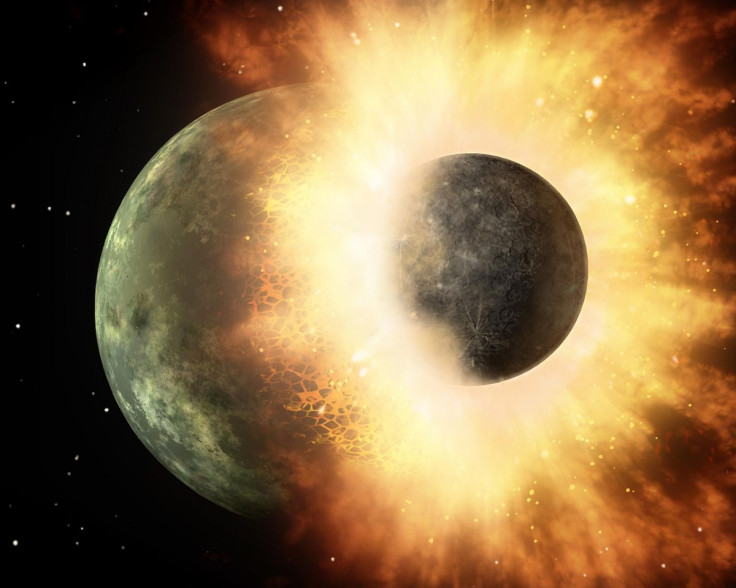No giant cosmic collision? Leading theory on how the Moon formed challenged
Study indicates a giant collision between Earth and the Mars-sized protoplanet Theia never happened.
The most widely accepted theory about how the Moon formed has been challenged, with scientists saying a series of large impacts – rather than one giant collision – created our natural satellite. By running numerical simulations, researchers say the Earth being hit by several large planetary bodies would help explain why our planet and the Moon are largely composed of the same material – a problem that has plagued scientists for decades.
The giant impact Moon formation theory was first proposed in the mid-1970s. It says a Mars-sized protoplanet called Theia smashed into Earth around 4.5 billion years ago. The ejected material created a disk of debris, molten rock and gas that eventually condensed to form the Moon.
However, there is a big problem with this theory. If it was correct, the Moon's composition should be a mix of both Earth and Theia. For this to happen, Theia would have had to be almost identical to Earth in terms of its composition, which is highly unlikely.
A team of scientists from Israel has now come up with a potential solution. In a study published in Nature, they carried out almost 1,000 simulations of large – but not giant – planetary bodies impacting Earth. Their findings showed a series of big impacts could explain the Moon.

In this scenario, each collision creates a small disk of debris. Eventually, this would accumulate and merge to form the Moon. Because the impactor is smaller, the debris ejected would mostly be from Earth – explaining the Moon's composition. In total, it would take around 20 large impacts until the moon had formed. Should this theory be correct, a record of the Moon's formation could be present in its interior.
Study author Hagai Perets said: "Our model suggests that the ancient Earth once hosted a series of moons, each one formed from a different collision with the proto-Earth. It's likely that such moonlets were later ejected, or collided with the Earth or even with each other to form bigger moons.
"We believe the Earth had many previous moons. A previously formed moon could therefore have already exist when another moon-forming giant impact occurs."
Commenting on the study, Gareth S Collins, from the Impact and Astromaterials Research Centre at Imperial College, said the idea of a series of impacts "helps resolve the isotopic conundrum" in an appealing way. "The Moon becomes a blend of multiple compositional signatures, rather than two, and so the effect of each impactor on bulk composition is reduced," he wrote in a related News & Views article. "It is rather like mixing colours: the more distinct colours you add, the less change each new one makes until the result is dark brown."
However, the theory also comes with its own problems, he added. "Rufu et al. envision a scenario where following each impact, a new moonlet forms from the disk, migrates outwards and merges with the growing Moon," he said. "Although they do not model the Moon's accretion, their analysis suggests about 20 impacts are required to build the Moon — assuming perfect merging of every moonlet. If, as seems likely, merging is imperfect or some moonlets are lost, many more impacts may be required, thus making the necessary sequence of events far less probable than any of the more exotic single-impact scenarios."
Concluding, he added: "For final adjudication, we must now look for firmer evidence on each side."
© Copyright IBTimes 2025. All rights reserved.






















